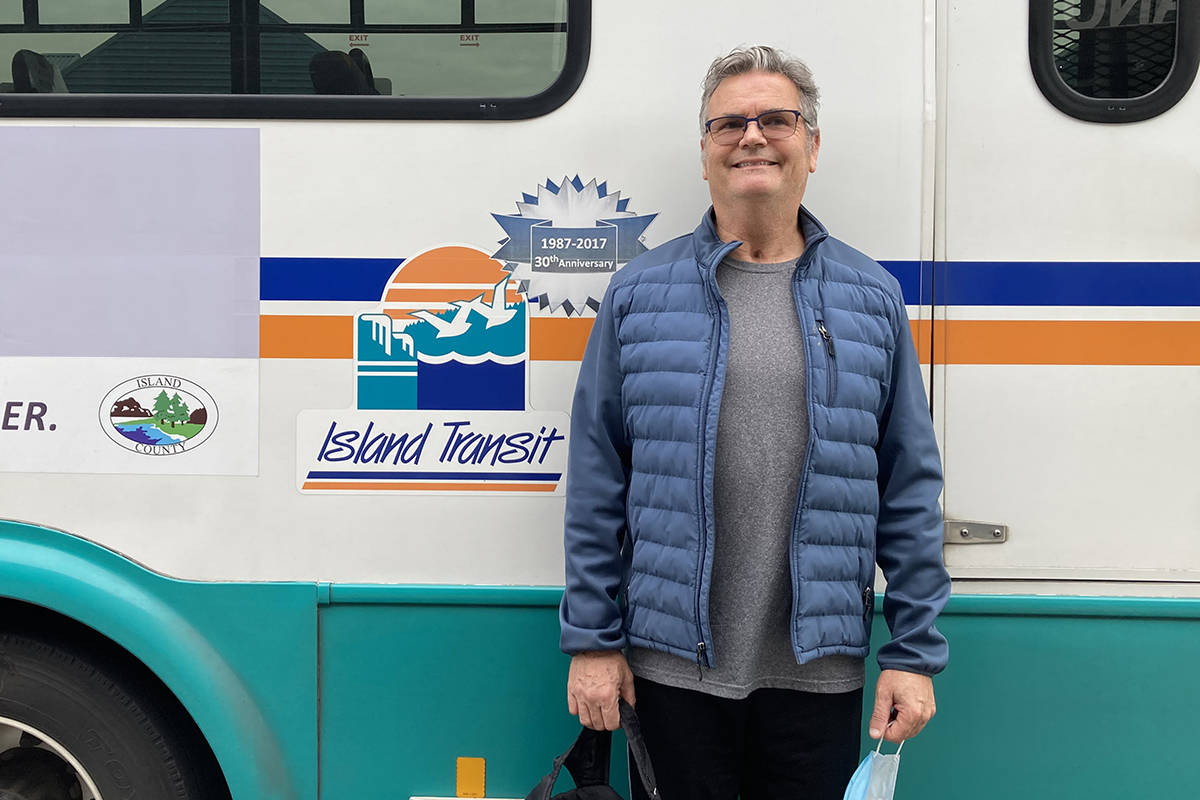It has been five years since Ric Shallow woke up in the hospital after his car slid on black ice and wrapped around a tree while driving on Camano Island one wintery morning. His head injuries were extensive; his survival, a miracle.Little did Shallow know that his road to recovery would begin with a gym membership and a bus ride.
“I don’t remember a thing about the accident,” says Shallow, who spent nearly two years in different hospitals.“People tell me it was a nice day; cold and icy.They say that I hit the brakes to avoid hitting a car in the ditch ahead of me.”First responders used the Jaws of Life to get him out of the car.
When he came home, he couldn’t walk, he had lost vision in his left eye, and couldn’t lift any weight.“Exercise is really important for my rehabilitation,” Shallow says.
As a result of his injuries he could no longer drive a car; however, his recovery meant getting to the gym several times a week. His wife, Julie, suggested taking the bus.
“I was freaking out about the bus,” admits Shallow. Julie suggested they talk to the staff at Island Transit.“They said, ‘No worries. We’ll come to your house.We’ll pick you up and take you to the YMCA.’”
Shallow, who had never used transit before, says he couldn’t believe how helpful they were.“I thought, ‘You’ve got to be kidding.’”
Island Transit provides fare-free paratransit bus service to people living with disabilities that impair mobility.If a rider is unable to use the regular fixed route, and medically qualifies, Island Transit’s Paratransit Services will provide transportation as long as the pick-up and drop-off location is within three-quarters of a mile of a regular fixed route.
Now, Shallow takes the bus from Camano to the Stanwood YMCA three days a week. Sometimes he uses paratransit, and sometimes he’ll use regular fix routes and transfers to Skagit Transit to get to the Mt. Vernon YMCA.
“Without the bus, I’d be trapped at home, doing nothing,” says Shallow, who now runs up to two miles, can swim one mile, and can lift 90 pounds. “The bus gets me out of the house for a break and forces me to do things on my own.”
The mobility public transit provides has helped many people enhance their quality of life by gaining freedom and independence.For this reason, Shallow says, “It’s very important to fund public transit.I used to be that guy who complained about paying sales tax.Now, I don’t mind paying.It’s a necessary service.”
Shallow says he shops locally to support public transit, which is funded through local sales tax.Nine cents of every taxable dollar spent in Island County goes to Island Transit to support community transportation.
“The community’s investment in public transit makes it available to everyone and often when it’s needed most,” says Island Transit Executive Director Todd Morrow.Island Transit provides about 760,000 trips in a non-pandemic year.
Despite everything, Shallow considers himself lucky. He appreciates the role Island Transit continues to play in his life.“I love the bus.It’s a lifesaver.”



